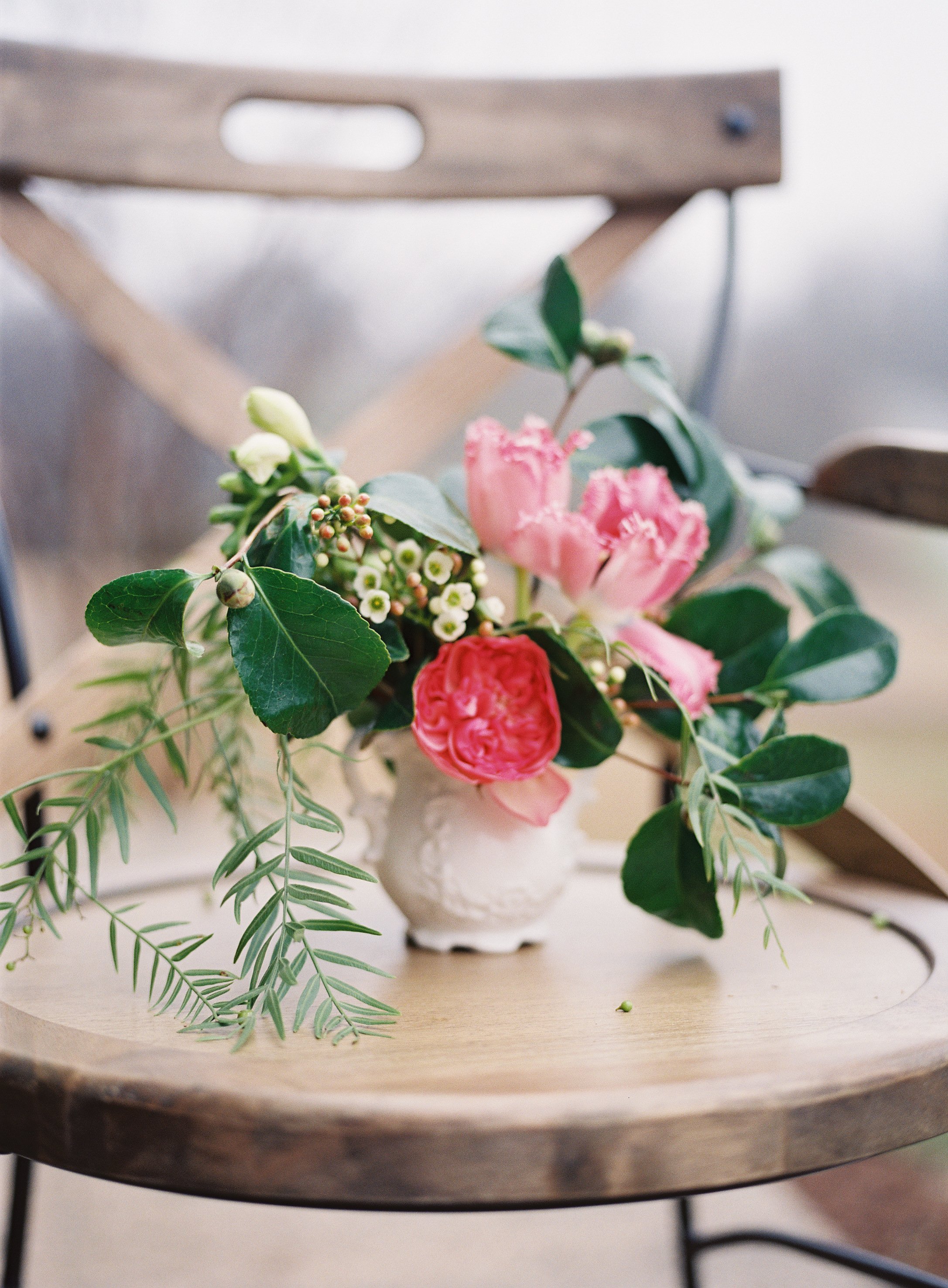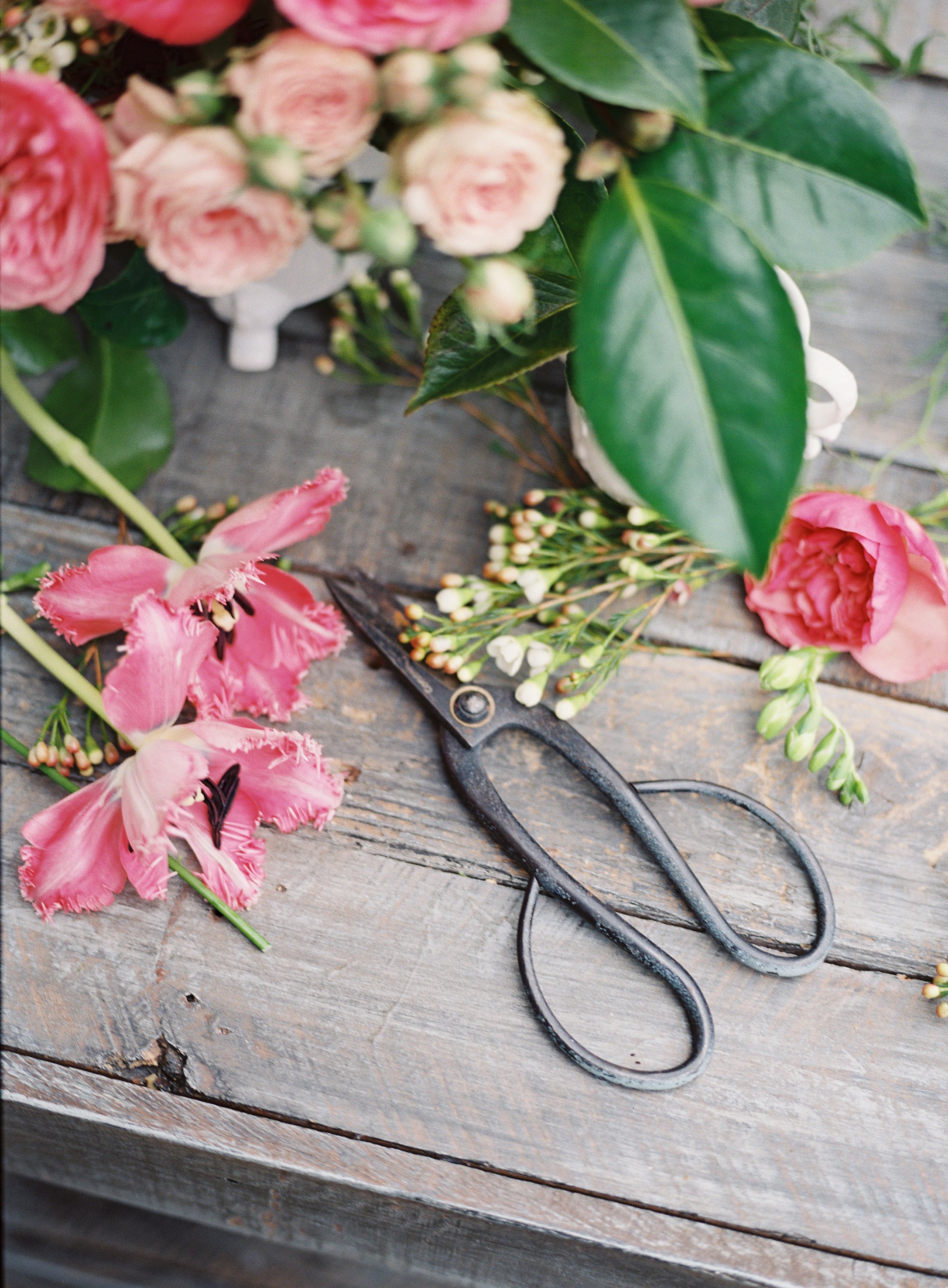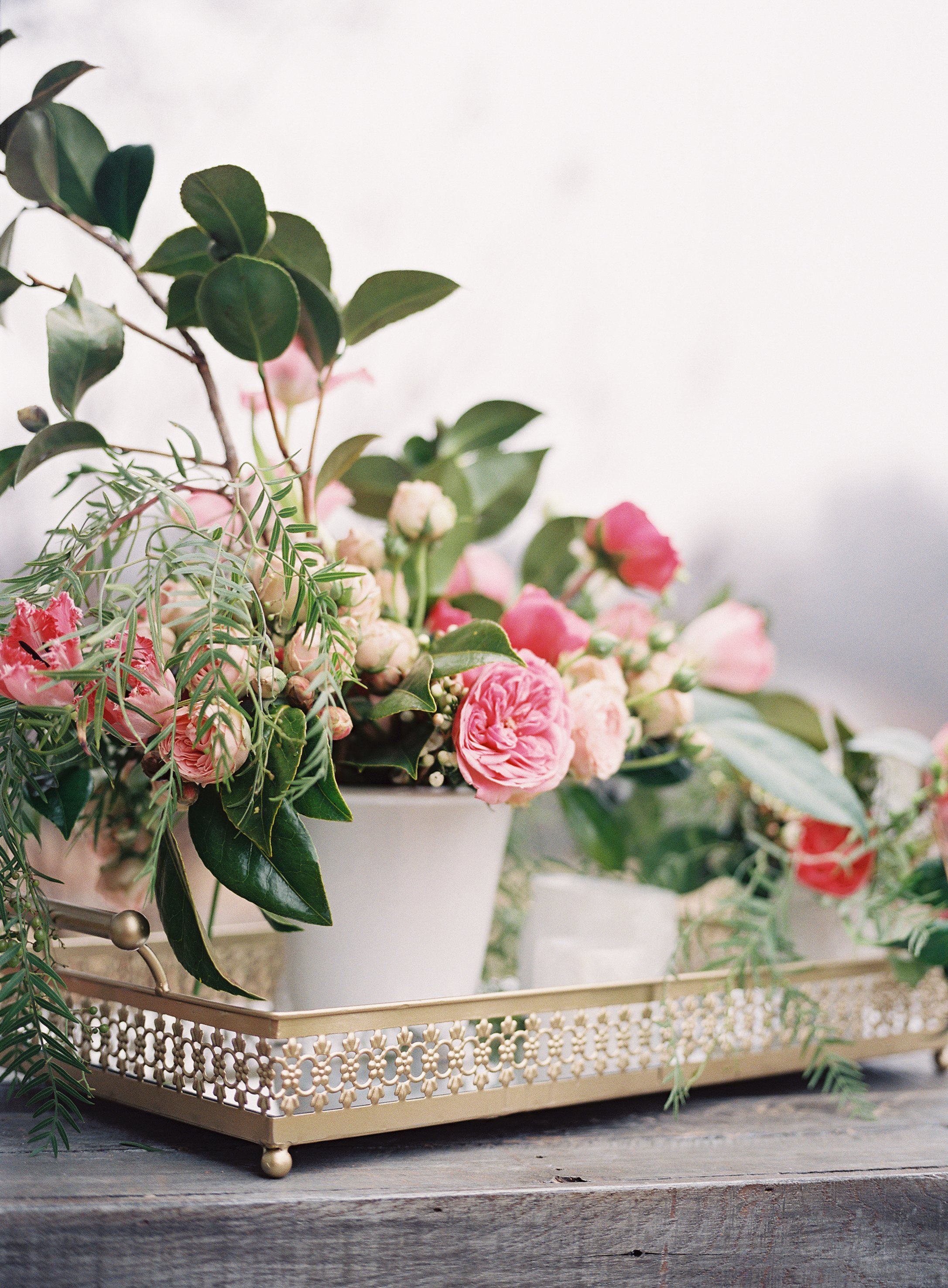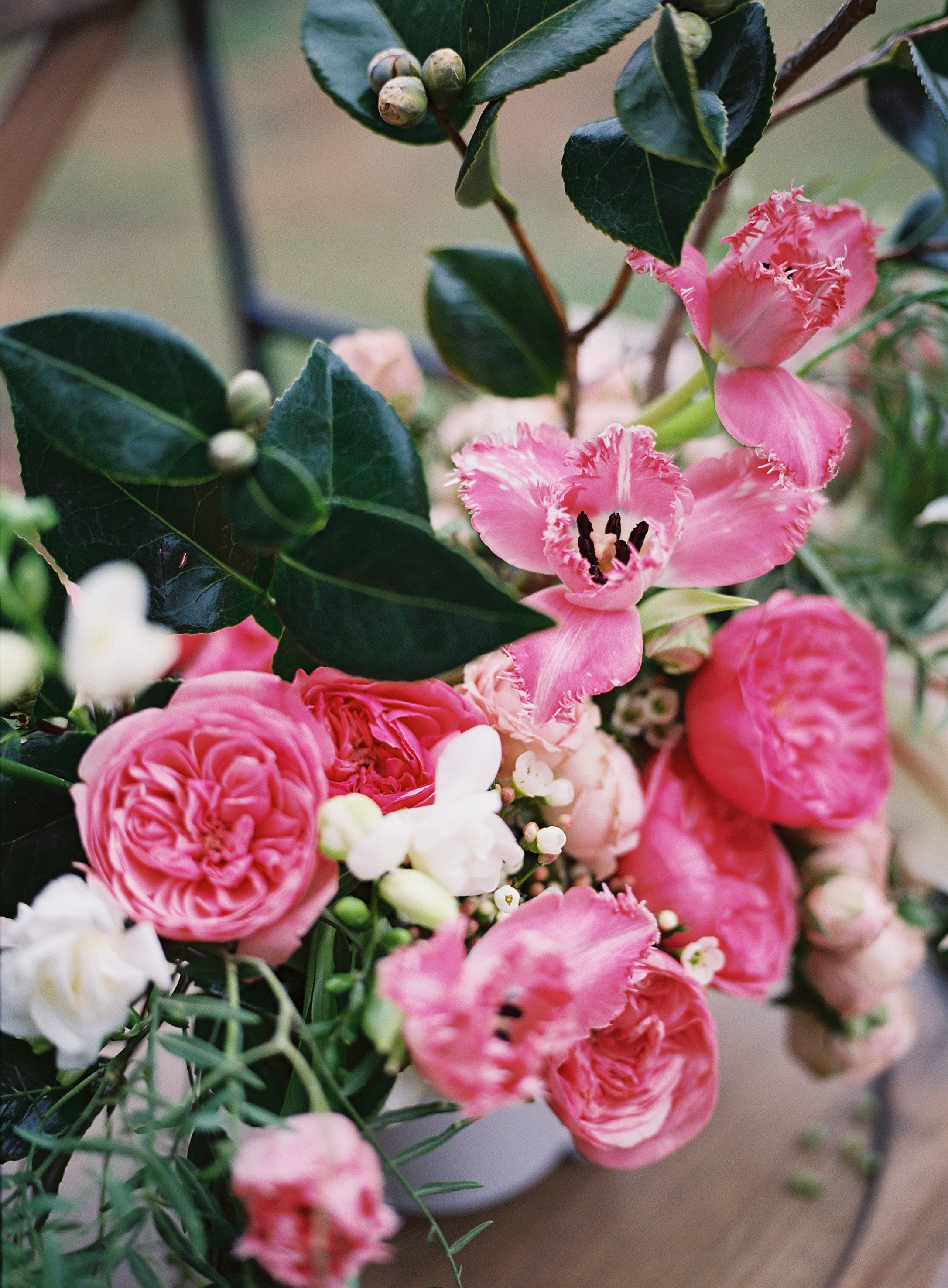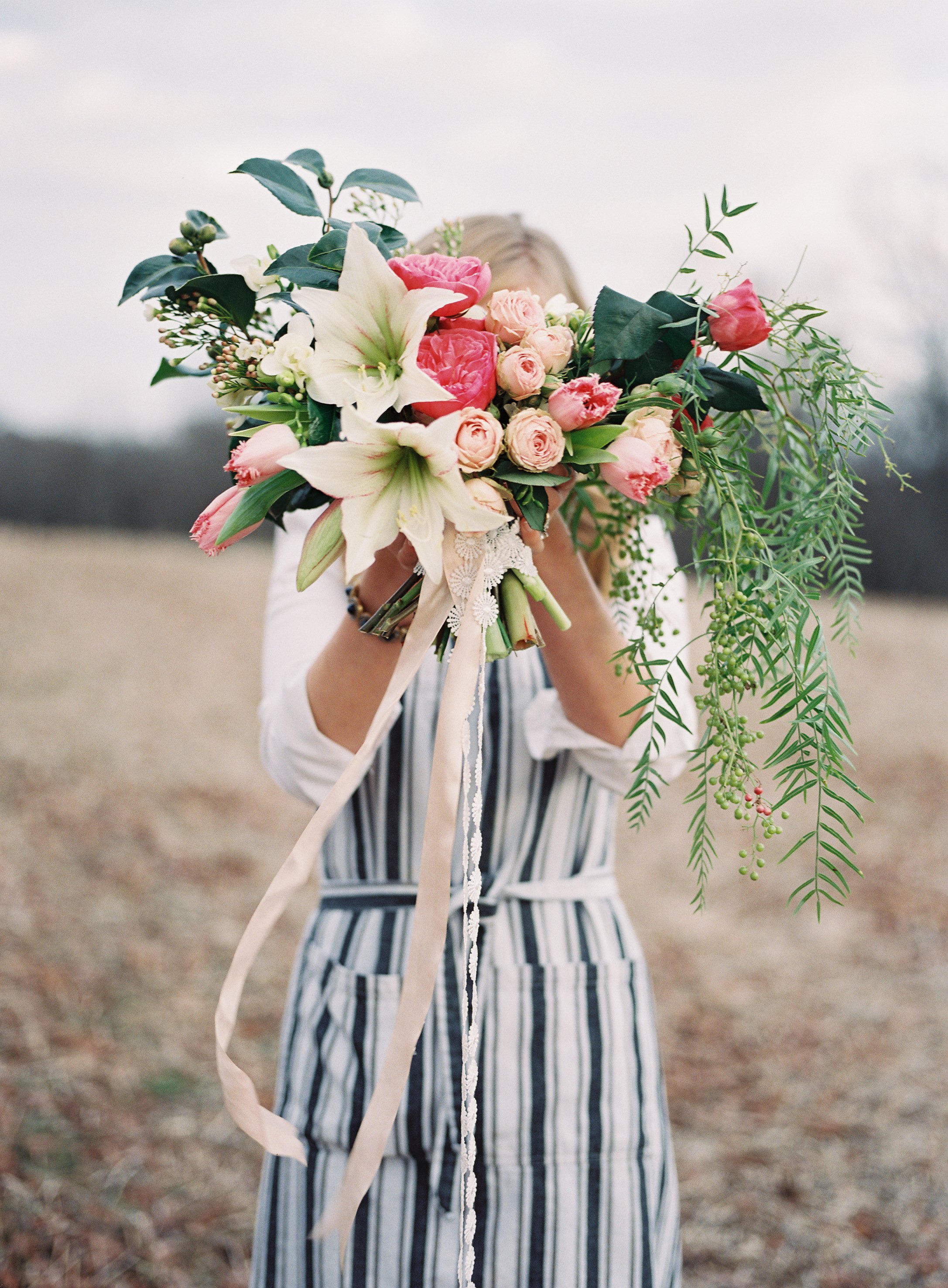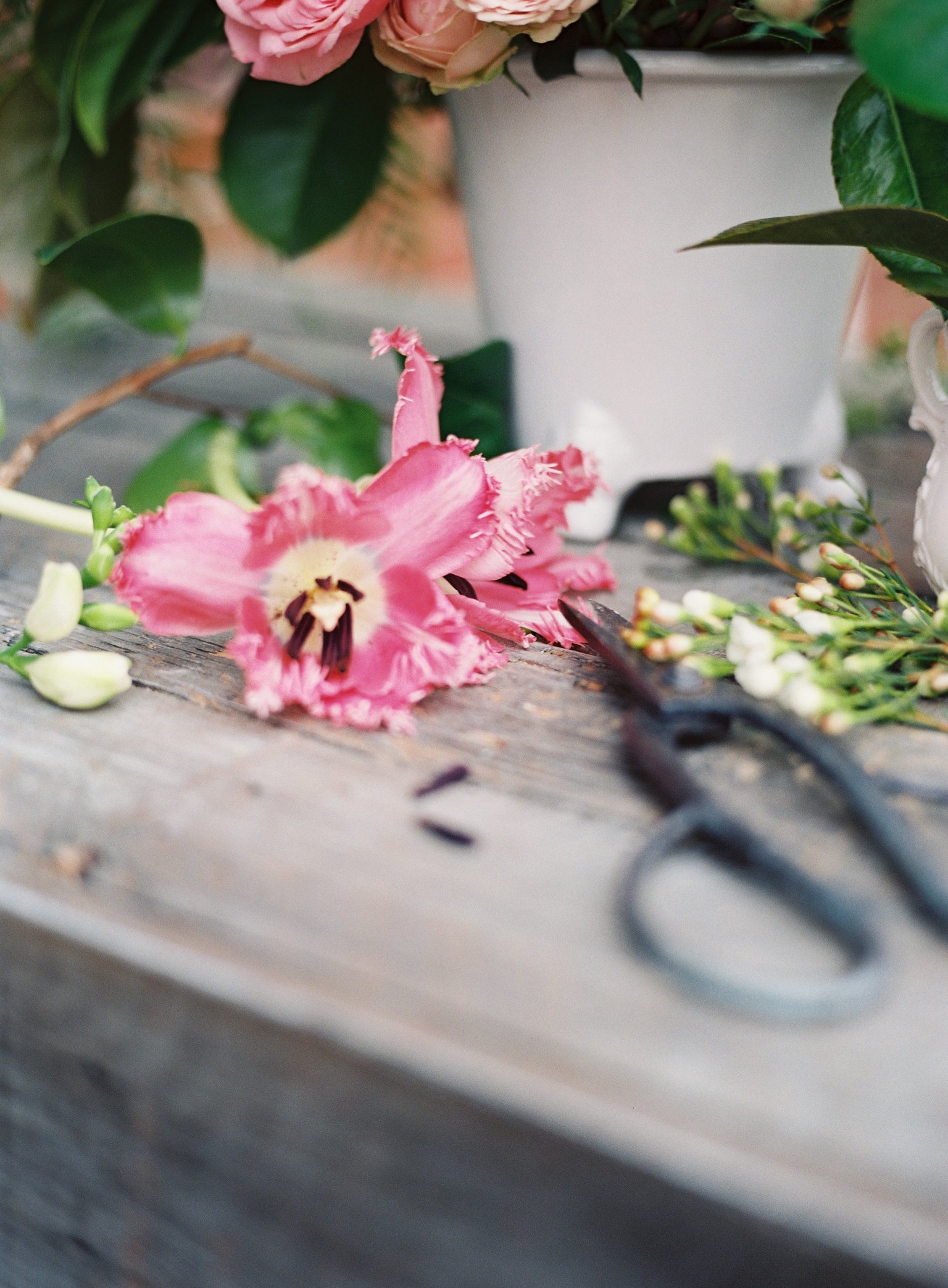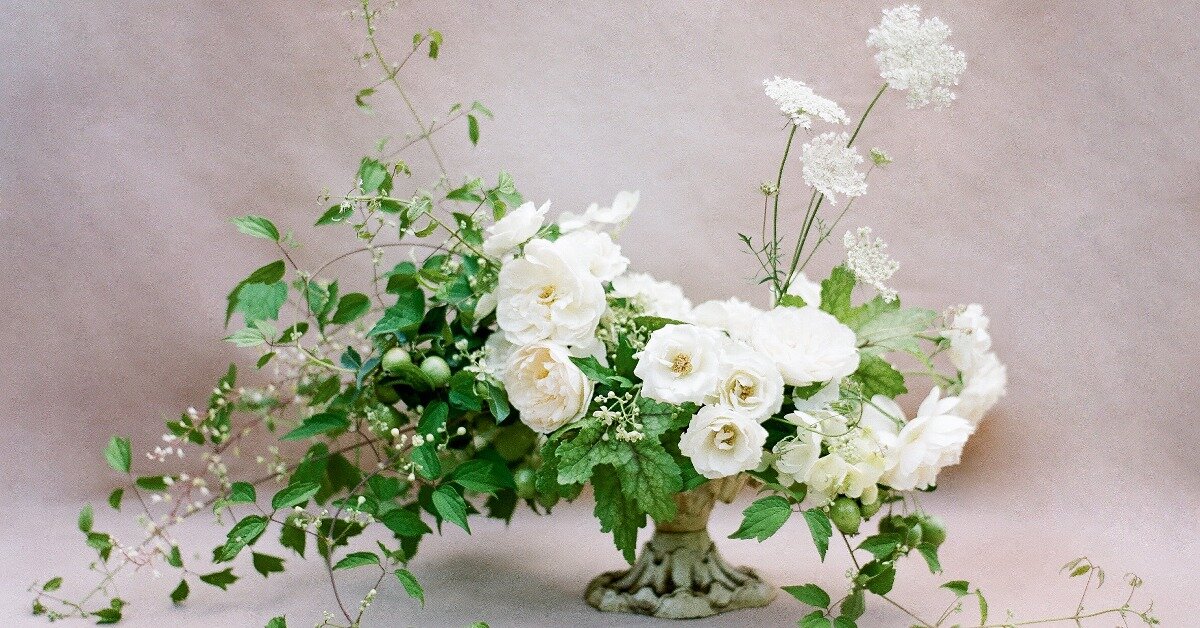Florist Salary Info: How much do floral designers actually make?
There is much to consider when planning your future earnings.
If you're curious about florist salary estimates and projections, you've landed in the right place.
Whether you're looking to start a career in flowers or have been in the floral industry for a while, there's a lot to consider when planning your future earnings.
In this article, you'll cover:
How much do floral designers make?
A floral designer salary depends on a few factors:
your local market, state, and country
the type of floral design work you do
where you work
if you own your own business, work as an employee for someone else, or freelance
and more!
But before we dive into specifics of florist salary statistics that are currently available (and why there are so many different salary ranges out there), we have to make an important distinction:
The florist salaries that you can find online are often based on reported employee wages, or what florists earn when working for other people or businesses, such as a grocery store floral counter or a floral retail shop.
But many floral design business owners and freelancers create a larger earning potential for themselves (and have more control over their income) when they listen to the needs of their customers, market with clarity, sustainably price and order for their floral work, and scale their business.
In this article, we're going to talk about both groups:
Floral design professionals who work as employees of other businesses and
Floral designers who own their own business or work for themselves.
it’s difficult to find accurate numbers for florist salaries
If you're reading this article as a floral design professional looking to grow or expand your income, you're in the right place.
You'll get ideas and resources for pricing, ordering, and scaling your business through new revenue streams here.
And if you're here as a florist or floral clerk working for a larger business as an employee, this guide is for you, too!
This article can help you get a better sense of what you can make per hour, what you should charge, and how to grow your earnings over time—not to mention, you'll also get some smart ideas to present to your employer to expand sales offerings.
Let's dive into florist income information that's currently available through a few organizations that collect this kind of data.
Ready for a career you're passionate about? Discover how to become a florist.
The Facts of Florist Salary Estimates
According to the U.S. Bureau of Labor Statistics (BLS), the median floral design salary is reported as $29,140 as of May 2020 (1). However, this information isn't based on the full spectrum of earning potential for floral designers.
And based on changes due to the pandemic and economy, these numbers may have shifted.
In fact, after an initial income loss from cancelled events and weddings, many floral professionals saw an increase in a demand for flowers since the start of the pandemic.
“It’s important to keep in mind that the numbers reported by the BLS don’t include the range of income and profits that floral designers can earn by running small businesses (or working for themselves).”
It's also important to keep in mind that the numbers reported by the BLS don't include the range of income and profits that floral designers can earn by running small businesses (or working for themselves).
Next up: If you look at reported numbers from Salary.com, you'll see a completely different salary range. Salary.com reports that, on average, floral designers earn between $42,775 and $63,679, with hourly earnings estimated between $21 and $31 per hour (2,3).
And if you do a bit more digging, you can find reports for floral designer salaries and what florists earn per hour on Glassdoor for some of the most common grocery store companies that range from mid $20K up to over $60K (4).
When these numbers vary so widely, it can feel like there's some information that's missing. But what is it? And why doesn't anyone have a definitive answer to what you can earn as a florist?
If you're already working as a floral designer, how can you grow your earnings and price your floral products and services sustainably?
We offer an online Pricing and Ordering class for floral professionals that's well-loved by students, but we'll also cover some income growth ideas later in this article.
There are many diverse career opportunities within the floral industry.
Here's why floral designer salary information varies so widely
The reason why it's difficult to pinpoint the average salary of a floral designer is because of one simple truth:
We don't have comprehensive numbers for how much floral designers make because it's a nuanced conversation, one that depends on your market and role in the floral industry.
The basic florist salary information that can be found through a quick internet search is unable to account for the diverse earning potential of all the different career paths.
Many floral professionals are small business owners, some owning and managing a hybrid of revenue streams, including things like:
Wedding floral design
Flower farming
Florist shops and gift retail
Educational workshops
Corporate and hotel floral design
Flower truck businesses
Farmers' market flowers
And because salary data often is reported and estimated on wages earned through working as an employee, the numbers don't often account for salaries or profits earned by floral business owners.
The information that's readily available online is unable to answer these important (and very specific and nuanced) questions.
However, we'll walk through some of those questions with you in this article!
“Floral professionals can be event designers, wholesalers, farmers, or freelancers (just to name a few), so finding a median salary amongst all of those jobs is nearly impossible!”
How much do flower shop owners make?
Flower shop owners make income by drawing a salary from their business profits, but they also can earn additional income on top of their planned salary through profits made.
Profits are what's earned after paying out business expenses, including the costs of flowers, hardgoods such as vases, containers, and retail products, employee wages, retail space costs, and business insurance.
To learn more about running a floral shop—including tips for profitability and sustainability—from real-life flower shop owners, check out these Team Flower Podcast episodes:
Embracing Your Community with Flowers with Holley Simmons of She Loves Me: Learn tips for sustainable flower shop practices and hear about Holley Simmons' journey to expand her shop.
Owning a Flower Shop with Maggie Bailey of Bramble & Bee: Maggie talks through some tips for shop set-up, keeping your costs low, and how to set your flower shop apart.
Running a Second-Generation Retail Shop with Marisa Guerrero of Debbie's Bloomers: Marisa shares tips on what it takes to run a flower shop and why furthering your floral education is vital to this venture.
Some of the best places to look for support for opening a flower shop include the Society of American Florists and the Team Flower Community. Connect with a mentor who has gone before you and honor their time and expertise they choose generously share with you.
It’s important to have a grasp on standard floral industry markups.
Is owning a flower shop profitable?
It can be! If you'd like to start a flower shop, your profits will depend on factors like your market, local competition, the time you're able to invest in the business, and your overhead costs.
But what if you don't want to own a flower shop with a dedicated physical retail space?
Or what if you'd like to take your flower journey a bit slower, instead of jumping all-in at first? (Retail space can be expensive!). It's okay to take things one step at a time.
If you're working for yourself as a floral designer, let's talk through some basics about florist pricing and standard markups. Many florists discover that once you get the right pricing and ordering strategies in place, it's almost as if you received a raise!
And if you're working as a florist as an employee of another business, this information can be helpful to have if you'd like to add value to the business you work for or take on extra floral design freelance work during your floral career.
Florist pricing and standard markups
If you're already in the floral industry, you've probably heard of the standard 3x flower markup, and this method works for many floral design professionals.
But if you haven't heard of this method, essentially, the "3x standard flower markup" is a pricing philosophy where floral designers mark up the wholesale cost of a flower by 3 (or another standard markup number of choice) to cover operating costs, work time, and design time.
However, while standardizing your pricing and ordering strategy is a smart thing to do, we believe there isn't a "one size fits all" pricing strategy for floral businesses.
You need to focus on your markup that is best for your business. Here's why:
While a standard markup sounds easy and simple for florist pricing, it's not sustainable for every business long-term. You have to run your own numbers, ones that account for the kinds of materials you use, your target client, your time (including time to deliver), and more.
It’s good to consider general floral industry standards, but it is also important to be in tune with local floral industry standards as well. Often, florists who are starting out have a tendency to price their products and services very low to gain clientele. This greatly skews local floral pricing standards in your area and undermines those who have taken the time to do their research and price their products to what they are worth. In order to get a handle on what the local industry markups are, tap into your local floral community and ask for help. You'll find that most floral professionals believe there is enough business for everyone and will welcome you with open arms!
Standards also vary based upon where you live and your access to flowers. For example, floristry in a large city will have much higher overhead costs as well as higher pricing on flowers. Therefore, the "standard markup" is generally higher. Whereas in more rural areas, the cost of overhead can be lower, and so can the cost of flowers.
Do you need help nailing down your own profitable pricing and ordering strategy? Check out these helpful resources below to get started.
Video: 5 Q&As on Pricing in the Floral Industry: Join floral educator Kelly Perry in this free lesson from the Team Flower Pricing and Ordering online class.
Video: Core Sustainable Pricing Philosophies: Discover key floral pricing philosophies to guide your floral business to a sustainable model.
Article: Create a Free, Powerful System for Floral Pricing and Wholesale Purchases: Have a working pricing and ordering strategy for your business, but need to get organized? This resource is for you!
Article: Creating Functional Flower Recipes for More Efficient Ordering: Save time, money, and reduce waste by learning how to create functional, adaptable flower recipes.
If you've got a great floral product pricing and ordering strategy in place already, go you! Next, let's jump into things to keep in mind when growing your florist salary and income.
Regardless of what role you play in the floral industry, there are several factors that will affect your annual income.
Florist Salary Considerations
There are so many different and creative ways to earn a living as a florist.
When estimating your possible earnings, it's important to understand that the market you work in, your target clients, and your skill and experience level will impact how much you're able to earn—no matter what floral design job you hold!
To discover more about roles and responsibilities in the floral industry, check out our How to Know Which Floral Design Career Is Right for You resource.
For example, an intermediate-level event floral designer in New York City may have higher hourly earnings than a more experienced florist in a small rural town due to the cost of living and salary requirements of a large city.
However, in Lesson 2 of our Floral Pricing and Ordering online class, floral educator Kelly Perry demonstrates that—for most floral professionals who price sustainably—the earning potential of high-end large events and small-scale options (such as micro weddings and take-away florals) can produce the same hourly income for florists in the same market.
It's a common misconception that floral designers must work high-end, large-scale events to earn a sustainable income. There are many avenues to increasing your floral design salary and earnings!
Next, let's dive into how to grow your floral designer salary and how to build floral business income through some fresh ideas.
Growing Your Floral Design Salary: 17 Ways to Earn More Florist Income
If you're looking to start your floral design career or become a florist, you've probably discovered this resource while wondering what your future earning potential might be. And if you've found your way here looking to grow your career and your floral design salary, you're in the right place.
The good news—for both new and experienced floral professionals alike—is that there are many opportunities to grow your floral design salary or earnings by adding new skills and revenue streams.
Here are 17 ways to grow your florist salary or your floral business profits if you don't earn a traditional salary as an employee.
Build on your skillset and your speed. Growing and expanding your floral design skills is one way to open up more income-earning options. And this, of course, includes your design time and the time you take to complete routine tasks. By sharpening your skills and confidence, you're empowering yourself to save time (and increase your income!).
Get certified. Getting a florist certification isn't required to work as a florist in most states, and many floral design stars in industry do not have formal certification. However, getting certified may allow you to charge more for your services in some circumstances or find clients who may hire you to instruct or train them. Learn more about why you may want to get certified, or check out the Team Flower online classes (you can get a certificate of completion to show clients and prospective employers!).
Learn to grow flowers to use in your designs. No matter the size of your growing space, growing your own flowers to use in your floristry work can increase your revenue, as you're offering another product or service to your clients: homegrown local flowers. Even supplementing your wholesale floral orders with homegrown or foraged flowers could increase your profit margin (and, consequently, your income).
Provide community floral design classes and workshops. If you're an experienced floral designer who enjoys sharing the love of flowers with others, hosting bouquet-making workshops or DIY wreath classes can be another fresh revenue (and income!) stream. Read Should you host floral design workshops? to learn more.
Host pop-up shops. If you're an event or wedding floral designer, reach new customers and expand your earnings by hosting floral pop-up shops in the wedding and event off-season. Learn more about floral design pop-ups here.
Expand your existing flower business. This might seem like a no-brainer to increasing your income, but it's also hard work. If you want to move your side-hustle floral design business into full-time work, you'll need to invest in getting new clients through marketing, networking, possibly hiring help or opening a mobile or retail storefront, and more.
Reduce your overhead. You could increase your profit margins and income in your floral business by reducing your overhead and learning to price and order sustainably (as mentioned above), which would help eliminate over-ordering waste and bring in higher profits for your floral design work. This isn't about cutting corners though—it's about strategically thinking through shifts in your business to have a sustainable future.
Offer floral subscription options. Start a floral subscription for local customers or a flower CSA if you're a farmer-florist. Subscriptions can help you predict your income (as well as your ordering needs) in a more streamlined way.
Complete freelance floral design work for other designers. If you're an intermediate-to-experienced floral designer and would like to take additional work to expand your income, freelancing for other floral designers or event planners can be a great option.
Reduce time-consuming tasks previously included in your contracts. Think through ways you can reduce or eliminate timely tasks included in contracts past. No longer want to offer container rentals? You could reduce your cleaning time, time spent picking up items after their use, and storage concerns. Sometimes scaling back can help you move forward.
Charge more for your skills! Once you've built up a solid design portfolio, served many happy clients, and gotten additional education, it may be time to give yourself a raise. Whether that's increasing the price of your hand-tied farmers' market bouquets or adding an artist's fee to new event contracts going forward, charging more for increased skills can help you grow your income. For more information on pricing and ordering (or business growth) check out these online floral business classes.
Develop a new floral product line. If you're a studio florist who primarily services events, develop a new retail floral product line you can sell through your website. Build your network of event clients and other wedding vendors, and you'll have arrangements to offer for purchase for everyday gifts and special occasions outside of events.
Provide corporate and hotel flower services. Local retail businesses, restaurants, corporate offices, and hotels are great opportunities to create regular florist income opportunities.
Create a DoorDash merchant profile. Florists can now list their business on the DoorDash app. This can be a smart way to reach new customers outside of traditional marketing channels you've used in the past!
Increase your seasonal offerings. If you're not already in traditional retail floral work, think about offering wreaths for spring and winter holidays, create a product line for Valentine's Day or Mother's Day, or host floral design workshops for local flower lovers around these special seasonal celebrations.
Offer "everlasting" dried flower arrangements. Learn to dry flowers and create dried floral products to offer to customers year-round. Reach new markets outside of your local area through Etsy and your web store!
Add beautiful hardgoods to your product offerings. What pairs beautifully with fresh flowers? Gorgeous, creative vessels to display them in. Offer unique vessels or add a line of giftable products like fragrant candles to pair with flower orders.
Team Flower has countless resources for you as you walk your floral journey!
Powerful Resources for Starting and Growing Your Floral Design Career
If you're ready to become a florist—or if you're ready to grow your floral designer salary—we're here to help.
Here are some career-building resources to help you take the next step!
How to Become a Florist: A guided live online course to get you confidently started on the right foot to reaching your floral career dreams!
The Launch Workshop: In this 3-day in-person workshop, you'll have everything you need to launch your floral business by the end, including a website.
Pricing and Ordering Online Class: Discover profitable floral pricing philosophies. Learn to price your pieces and create spot-on client estimates without over-ordering and wasting product.
Business Foundations Online Class: Take the mystery out of the business side of florals and plan for long-term profitability.
Team Flower Podcast: Tips, tricks, and encouraging floral stories from real-life floral professionals on a journey to love the world through flowers.
Floral Design Tutorials: Step-by-step video tutorials and lessons to get you started in floral work—and keep you inspired on the road ahead.
Have a question about this article, a thought to add, or a correction? Contact us via the chat button on this page. We'd love to hear from you!
And if you're a budding floral pro looking to increase your earnings or profits and having trouble, we have floral education that can help. Contact us for a free consultation to discover what online class might be right for you!
All photos by Heather Payne Photography.


